Lakes
Beneath the surface
Lakes are complex and dynamic ecosystems. Water quality is determined by the land use surrounding a lake. The quality of the water governs types, numbers, and health of plants and animals living in a system. Many of our lakes receive excessive sediment loads and pollutants from upstream sources.
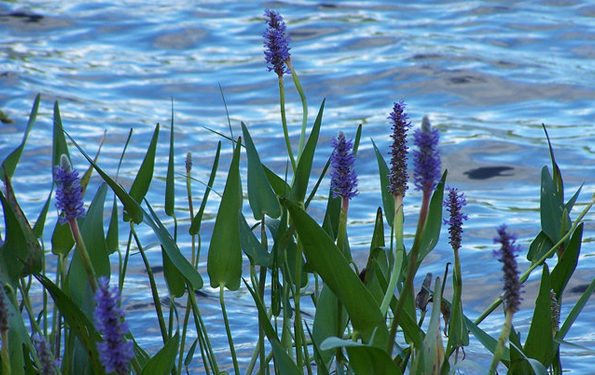
The sediment, when suspended in the water column, blocks sunlight from reaching rooted aquatic plants – an important source of food and shelter for fish and wildlife. Nutrients (nitrogen and phosphorus), travelling with stormwater and sediments, encourage prolific growth of algae. Normal algae and plant growth is beneficial to lakes, generating oxygen and providing a food source and habitat.
When excessive nutrient pollution creates excessive plant growth, the system is out of balance. Green, murky water shades the lake bottom, starving submerged, rooted plants. When the bloom of algae dies, the single celled plants decompose through a process that depletes oxygen from the water. The lack of oxygen can result in fish kills and unpleasant odors emanating from the green waters.
Over time, the lake or pond fills with sediment and organic matter in various states of decomposition. In an eventual transition to a wetland, the pond or lake loses the features of an open water habitat; this process is termed eutrophication. Without land use changes and human inputs, the process may take hundreds or thousands of years. With human influences (anthropogenic eutrophication), it can take only decades.
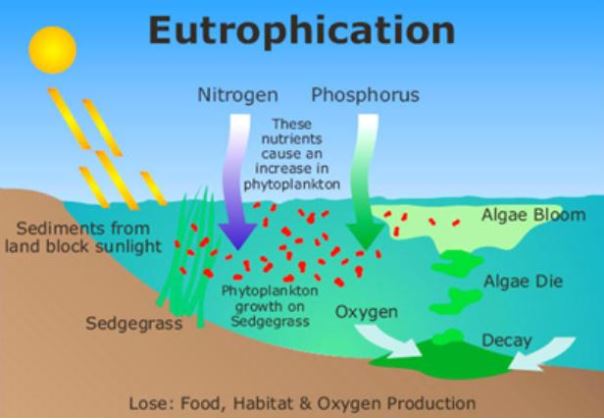
When eutrophication turns dangerous
In the summer months, warm water temperatures, plenty of sunshine, and underlying nutrient pollution from surface runoff combine and can produce Harmful Algae Blooms (HABS) in ponds, lakes, and slow moving streams. HABS are composed of a type of algae called cyanobacteria or blue-green algae. Most are harmless, but some produce toxins in their cell bodies that can be released upon their death, or when they break open from contact with a person, animal, or object.
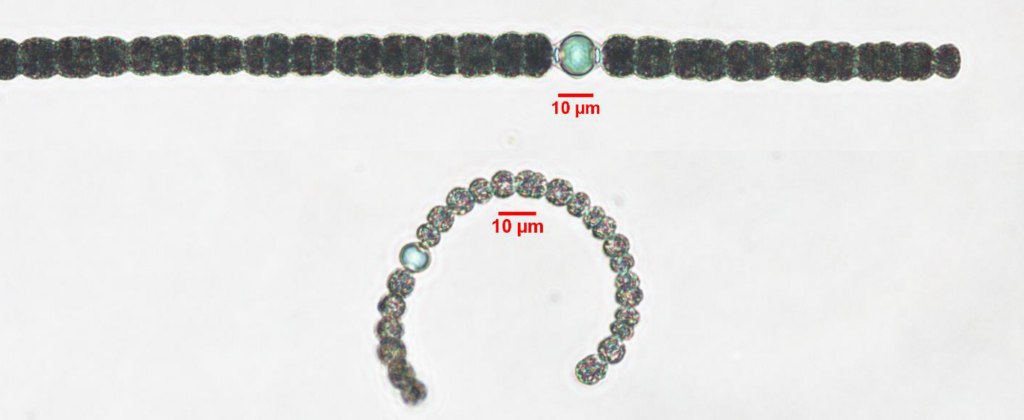
Common reactions to HABS toxins include respiratory symptoms, burning/irritated eyes or nasal passages, and itchy rashes on the skin. Dogs are particularly vulnerable to HABS because they may drink the toxin-laden water, or lick it from their wet fur.
If you have direct contact with waters exhibiting suspicious algae growth – bright green paint-like appearance, surface scums, or hair-like strands, wash the affected skin with soap and water as soon as possible. In the summer months, BCCD periodically sample Lakes Towhee, Luxembourg, and Galena for HABS since they are heavily used by the public. The monitoring program is supported by PA DEPs HABS program – learn more HERE.
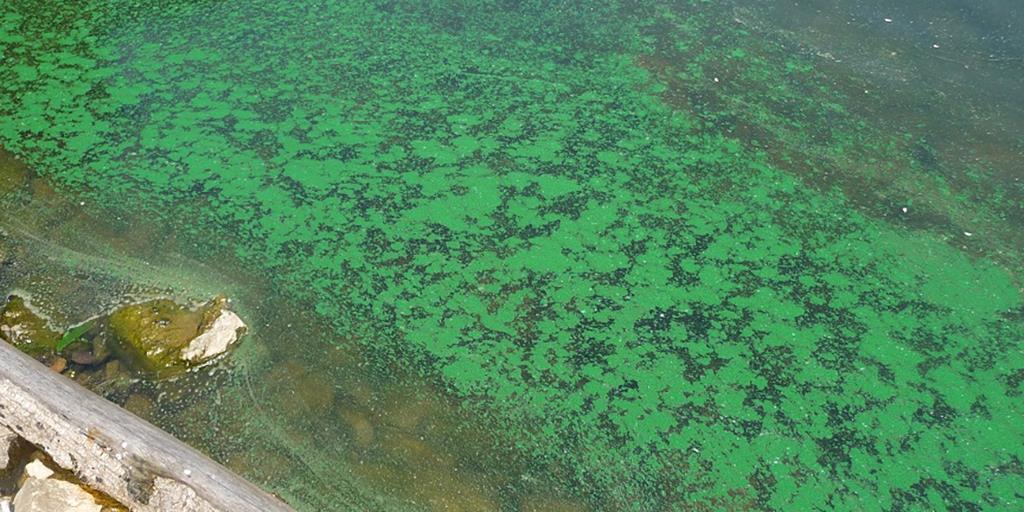


Bucks County Lakes
Bucks County’s water resources include twelve lakes, ranging in size from 11 to 1,450 acres. Several lake properties are owned by the County (indicated with an asterisk*) and can be enjoyed by residents by foot or non-motorized watercraft.
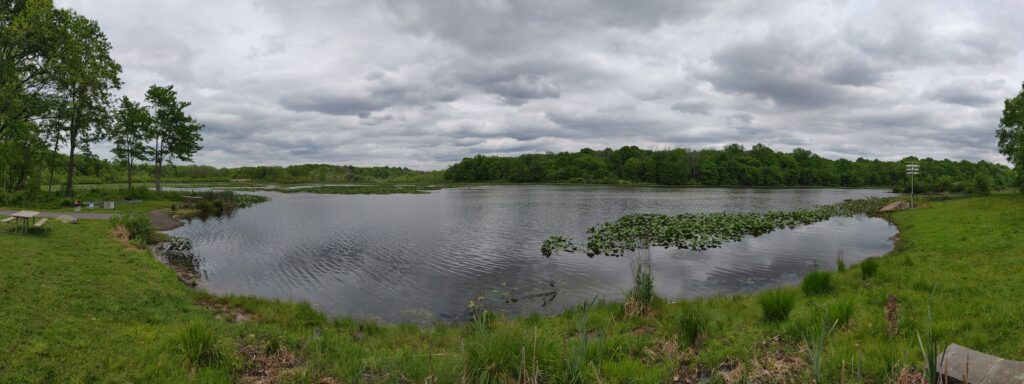
Lake Nockamixon (1,450 acres) – The largest lake in the County was created by the damming of the Tohickon Creek. The lake is the centerpiece of Nockamixon State Park.
*Silver Lake (26 acres) – A man-made pond dating to 1687, a dam on Otter Creek to provided hydro- power for the mills in Bristol.
*Pine Run Reservoir (39 acres) – Owned by the County, this lake is utilized primarily for flood control, secondary drinking water source, and recreational fishing and bird watching
Lake Warren – A 20-acre lake is located with the 1787.1 acre State Game Lands #56; located in Bridgeton, Tinicum, and Nockamixon Townships.
*Lake Galena (365 acres) -Created by the damming of Neshaminy Creek, this county-owned lake serves as the centerpiece of Peace Valley Park.
Lake Caroline (8 acres) – Part of the county-owned Oxford Valley Park, this lake was created by a dam constructed across Queen Anne creek.
*Lake Luxembourg (150 acres) – This county owned lake, within Core Creek Park, was created by the damming Core Creek for flood control, recreation and drinking water purposes
Springfield Lake / Churchville Reservoir – 180 acres (+/-) in Northampton Township is managed by the water utility Aqua America. On-land, nature-based activities are offered at the Churchville Nature Center.
*Magnolia Lake (25 acres) – Part of Silver Lake Park and Nature Center, this county-owned lake was formed from gravel pit used for the construction of the Pennsylvania Turnpike.
*Lake Towhee (50 acres) -Located in Haycock Township, this lake is popular for bass fishing by non-motorized boat or from the shore.
Bradford Reservoir – Part of a 280-acre natural area in Warrington Township, this reservoir was created from the damming of Little Neshaminy Creek.
Warner and Van Sciver Lakes- These lakes, and several smaller ones in the areas, were formed by sand and gravel quarrying and are available to private club members for boating, swimming, and fishing
Visit Bucks County Parks and Recreation for more information on recreational activities near you!
